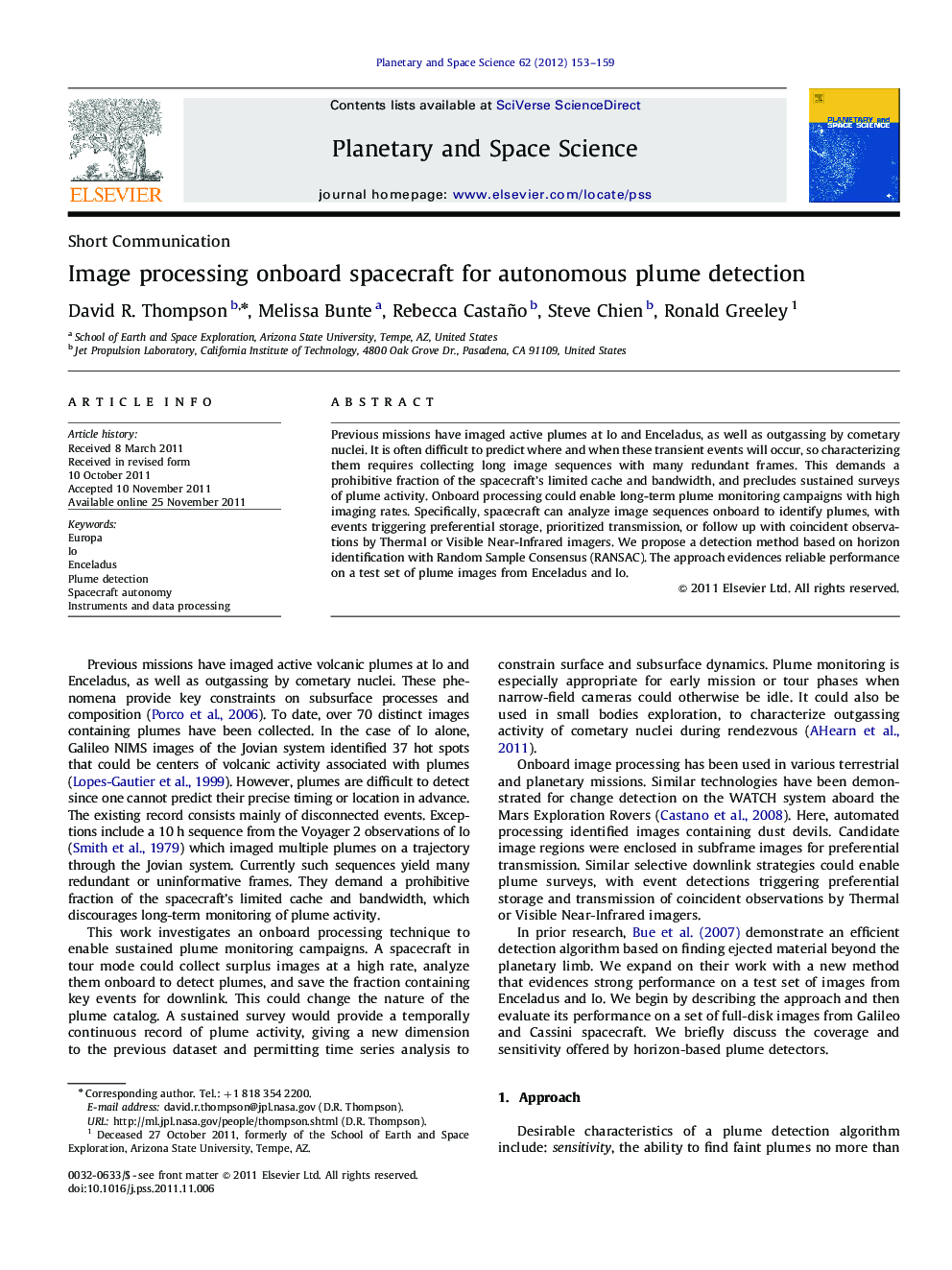| Article ID | Journal | Published Year | Pages | File Type |
|---|---|---|---|---|
| 1781516 | Planetary and Space Science | 2012 | 7 Pages |
Previous missions have imaged active plumes at Io and Enceladus, as well as outgassing by cometary nuclei. It is often difficult to predict where and when these transient events will occur, so characterizing them requires collecting long image sequences with many redundant frames. This demands a prohibitive fraction of the spacecraft's limited cache and bandwidth, and precludes sustained surveys of plume activity. Onboard processing could enable long-term plume monitoring campaigns with high imaging rates. Specifically, spacecraft can analyze image sequences onboard to identify plumes, with events triggering preferential storage, prioritized transmission, or follow up with coincident observations by Thermal or Visible Near-Infrared imagers. We propose a detection method based on horizon identification with Random Sample Consensus (RANSAC). The approach evidences reliable performance on a test set of plume images from Enceladus and Io.
